Featured in
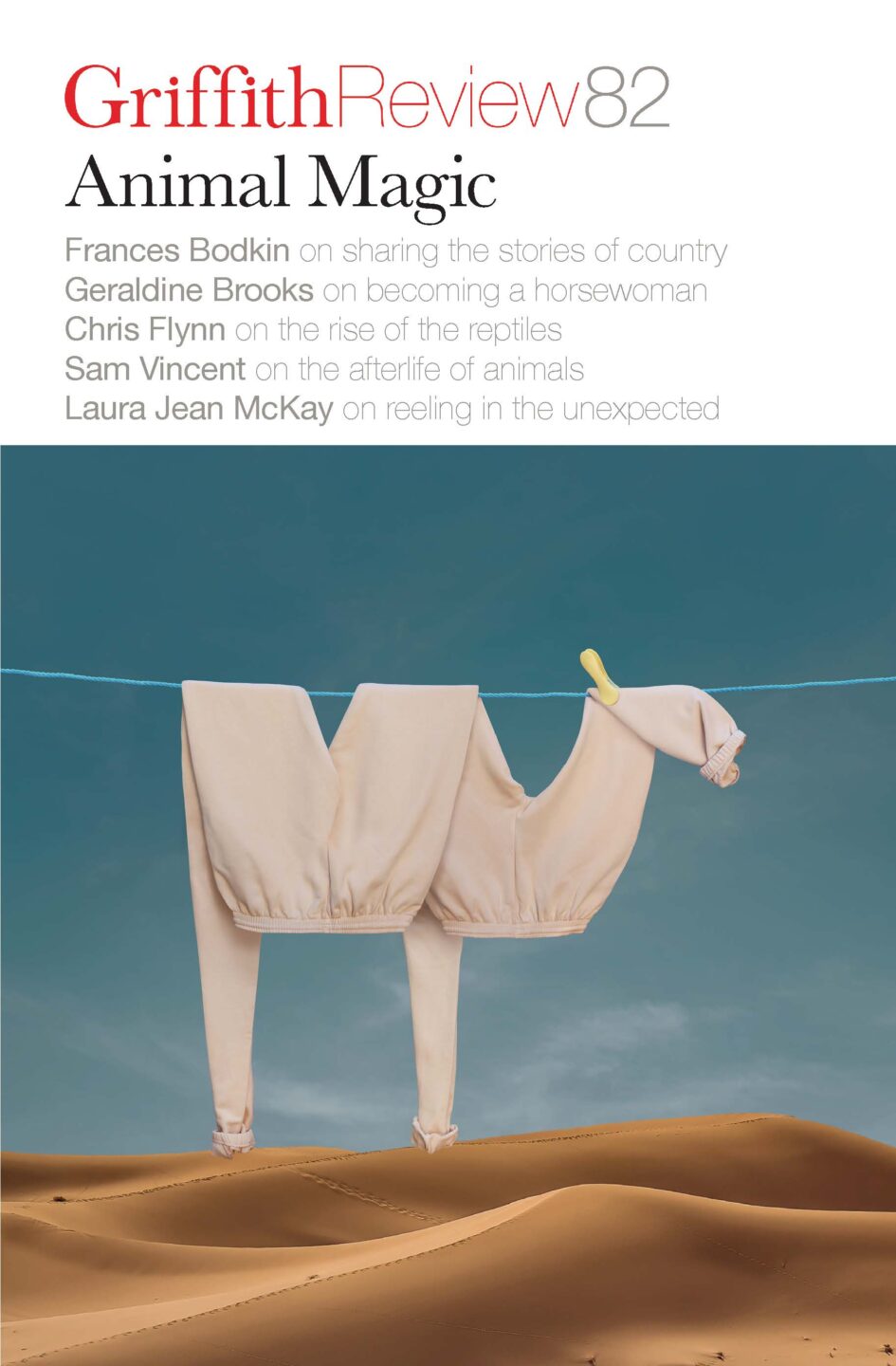
- Published 20231107
- ISBN: 978-1-922212-89-4
- Extent: 207pp
- Paperback, ePub, PDF, Kindle compatible
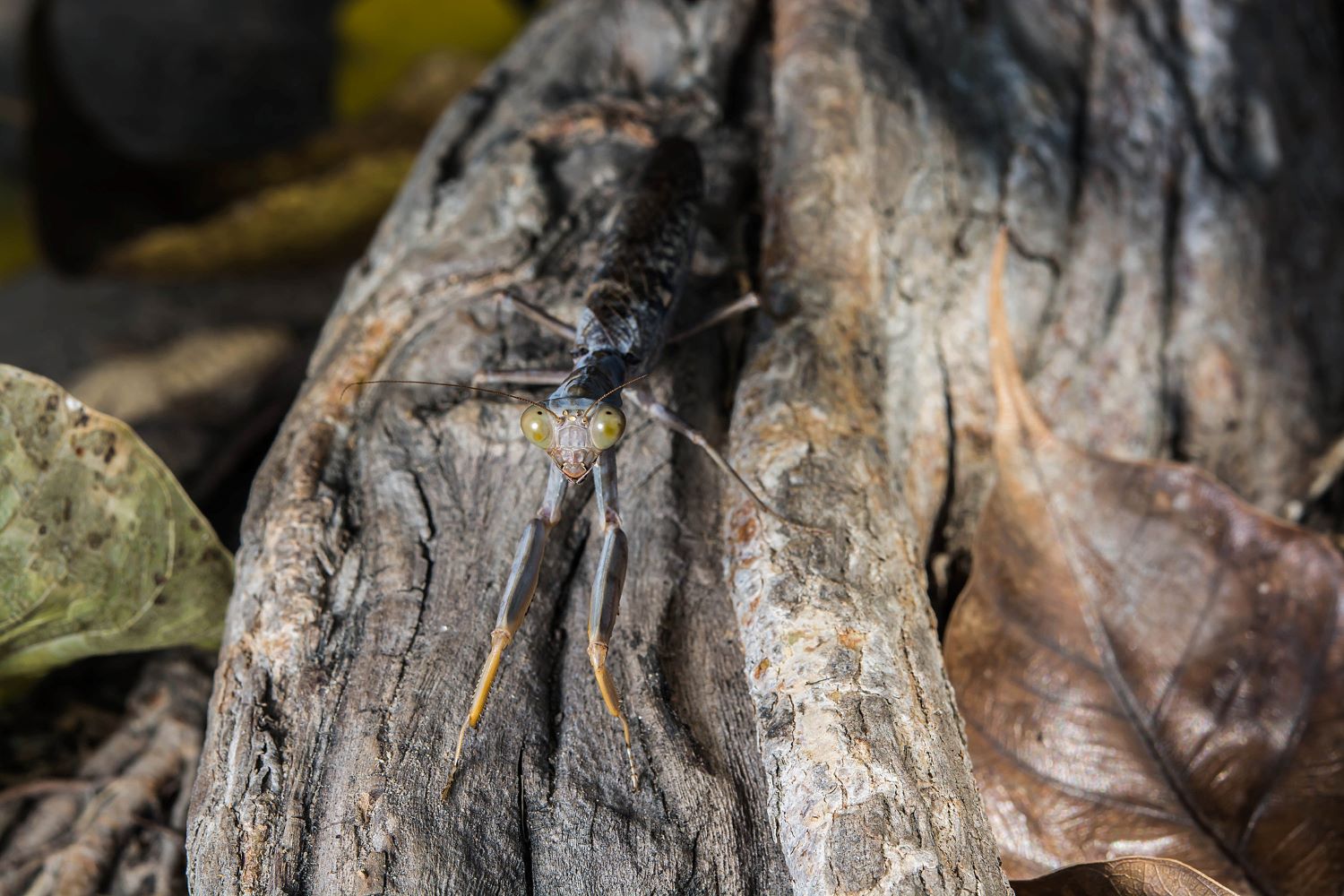
‘YOU’RE SEEING SOMETHING pretty special here,’ our guide said, and led us down a darkened path. If our sleepover at the zoo was an Agatha Christie novel – and there were undeniable Christie elements: thirty strangers in close proximity, atmospheric lighting, lions waiting to be fed – the first victim was surely about to fall. My wife nudged in closer. Our crowd grew hushed. Possums breathed heavily nearby.
We were using red-light torches to navigate Melbourne Zoo after dark. Red light doesn’t startle animals or hurt their eyes, but it has the curious effect of flattening the landscape it reveals, turning everything into shades of grey and tan. As a result, the enormous stick insects we were looking for seemed to be invisible and then suddenly there all at once: clinging to the window of their private enclosure, some larger than my hand. Antennae flickered with gentle indifference. Our group took turns squeezing forward to the small window to peer at them in squeamish delight.
The insects crawled peacefully against glass. They were born and raised in the zoo as part of a landmark conservation effort to restore their species. The Lord Howe Island stick insect was driven to the brink of extinction when a series of colonial British ships brought rats to their small home in the nineteenth and twentieth centuries. The rats ate the ‘tree lobsters’ with relish, and scientists believed they were extinct, until in the 1960s a group of rock climbers exploring a volcanic outcrop twenty-three kilometres south found a dead specimen. Still, it wasn’t until 2001 that scientists were able to visit the outcrop, where they were rewarded with a tiny population of twenty-four insects and collected two breeding pairs to take home. Melbourne Zoo named their pair Adam and Eve. Over 14,000 Lord Howe Island stick insects have been bred at Melbourne Zoo: a buggy success story.
Our guides told us the story of Adam and Eve, complete with a life-threatening illness and a keeper who nursed Eve back to fertile life, to many delighted gasps and exclamations from the enthralled audience. At the announcement that Adam and Eve’s offspring are now well past their fifteenth generation, one man broke into spontaneous applause. My wife leaned over to murmur in my ear, ‘As a British person, this level of reaction is alarming.’
Join the club, baby: at the time I found everything alarming. I was smack bang in the middle of the worst year of my life. Two months earlier, my fifty-eight-year-old father – the joker, the caperer, the heart of my family – had had a sudden and severe stroke that landed him in the ICU. My sister and I had taken an emergency flight back to Australia from our homes in Berlin, and my wife had soon followed. By the time I slept over at the zoo, we were in the strange limbo of the critical healthcare system: taking turns to be Dad’s regulated one-per-day visitor at the rehabilitation centre, living in on-and-off lockdown as Covid waves peaked and fell, and trying to understand what life had become.
Like all major life events, the stroke had ripple effects: some awful, some baffling, some plain funny. Melbourne Zoo’s Roar ’n’ Snore Overnight Camp experience was one of those ripples. It was a gift handed down from my mum, who had originally booked it for her and Dad to attend together. The camp offers the chance to feast, snooze and explore, with tents to sleep in, pizza in the evening, Milo before bed, and two guided tours outside of zoo operation hours. Dad would not, my mum pointed out, be sleeping in a tent and wandering the zoo after dark any time soon. So my wife and I filled a water bottle with white wine and set out to be amazed.
‘THE ZOO AFTER dark’ sounds like a cross between a children’s book and a thriller, which is an accurate enough summation of the whole experience. From the moment the audience arrived, tensions simmered under the surface. Our home for the night was the old elephant enclosure, built in the 1940s, where elephants roamed until 2003. Twenty two-person tents were gathered in its small grass yard. For thirty strangers over twelve hours, it was a close fit. For multiple elephants, it had been a life: forty- or fifty-odd years in captivity, until they died decades younger than they would have in the wild.
Melbourne Zoo knows that it sits in an uneasy position as a conservationist advocate, still keeping animals in cages, and with an exploitative and cruel past. Our guides for the evening walked a practised line between acknowledging the zoo’s harmful history and championing its animal welfare programs, from the native endangered species they’re saving to their Marine Response Unit, a dedicated seaside taskforce just waiting for their sentimental action movie. ‘We’re here to look after animals who we’ve decided are not going extinct,’ one guide said grimly, jaw clenched, auditioning for a lead role. ‘Not on our watch.’
But I’d spent months nodding along with a downpour of vague medical updates and platitudes and I was in no mood to be pacified. I went in with a laser focus on everything I didn’t like. What about the zoo’s naming practice, by which an Asian elephant is called Luk Chai (a Thai name) and a giraffe Nakuru (Kenyan), but a Tassie devil is Bryan Adams and a koala is Quesadilla? What about the book introduced with great fanfare at the beginning of the evening exploring the ethics of zoos – written by Dr Jenny Gray, CEO of Zoos Victoria? It was hard not to take each proud anecdote in bad faith. I was a bad guest, primed for cynicism.
Still, a thrum of discomfort hummed under every step at the zoo. Perhaps more so because it was night, and we were the sole intruding guests to peer at our captive hosts.
Add to the liminal feeling of a night-time stay the fact that the zoo is in flux, reaching towards a more compassionate future. The elephants we fed in the dark are making their way out; in 2024, the whole herd will move to Werribee Open Range Zoo. (‘That’s cool,’ said the stick-insect fan. ‘That’s really good.’) Three of the female elephants are pregnant (‘Awesome, just awesome,’ said the same guy) and their children will grow up in a much larger space, under gum trees and strange southern skies.
It’s difficult to acknowledge animal pain or discomfort without anthropomorphising. I want to understand animality as something equal but also alien to humanity. Their consciousness is not our own. The elephants might well like the gums. Certainly, thanks to our species, their wild is not safe. Returning a captive animal to its natural habitat comes with credible threats to life and limb, and I trust that the many conservationists and scientists working for Melbourne Zoo and other zoos around the world are not Bond-style villains enjoying their wild animals in cages. But – though it’s naive and childlike to say it, perhaps coming from the same naive and childlike impulse that makes us like to look at tigers up close – seeing animals in captivity makes me sad. I’d been spending a lot of time in institutions, forced to leave my dad behind at the end of each day. My mum, usually particular about fresh sheets every weekend, had resisted changing his pillowcase for weeks. My sister and I were freshly uprooted from Berlin; another sister was forced to cancel her upcoming semester abroad: we were all of us adjusting to new enclosures.
At dawn my wife and I listened to the virtues of the snow-leopard habitat while the leopard herself, used to roaming over 200 square kilometres or more, paced back and forth by a barbed fence. But there’s a golf course across the road. She could have been eyeing up the early morning golfers and their pink, enticing limbs.
LET’S BE CLEAR: the zoo was an enormous amount of fun. It seemed designed to bequeath each of us with a new favourite animal. Mine were the peccaries, furry pig-like animals who through the magic process of convergent evolution have no relation to pigs at all. They puff their fur up like spines and emit a bad smell when you startle them in the night (relatable). One woman became obsessed with the giraffes and spent ten minutes asking intent questions about sexual jealousy between the two females. A third giraffe emerged with an enormous erection, causing another onlooker to get so excited he dropped his phone in the enclosure.
As we downed our warm white wine, my wife and I grew increasingly amused by the sitcom-esque hijinks. The frenemy vibe between the two guides (‘There’s that theatre training coming through,’ one sniped while the other hollered for an elephant); the two guests who started extremely friendly towards us and got colder and colder throughout the experience for no reason that we could track, until my wife couldn’t stop giggling (‘It’s a Snore ’n’ Snub!’). There’s something joyful about spending a night with a group of strangers, every one of them as excited to see a lion as you are. Necking wine, making small talk, role-playing as someone whose dad has not had a stroke.
Yet much of a zoo is distressing, and I didn’t leave my discomfort behind when we stepped outside to the waiting 58 tram. If it’s not the snow leopard pacing the perimeter, it’s the stories you hear about the brutal rhythms of the natural world, which make captivity seem both appealing and strangely neutered, robbed of some great and dangerous cycle. Zoos are not unlike hospitals, really: institutions that you hate and that hurt you as they work to keep you safe and well.
Melbourne Zoo’s giraffes were lazy and sweet, with only their sexual exploits and boredom to worry about. Until recently, giraffes were branded as ‘bad mothers’, because they walk away from their young directly after birth. Then researchers discovered it was a tactic to protect their children, covering their scent so as not to attract predators to a lactating mother and her vulnerable young. Giraffes are perhaps the saddest prey animals I know, despite their staggering height. They sleep for only two hours a day, in bursts of twenty minutes, and one side of their brain is always awake and ready to run. I imagine a left hemisphere blinking awake through the night, never shutting down.
I am newly attuned to brains. That flickering grey matter. The spread of a sudden bleed, the constant alert. Giraffes and my dad, locked safely in their respective institutions, friendly to everyone and desperate to get out.
Crisis feels like a cage, too. Suddenly you’re in a restricted space, pacing the perimeter. Even if you can spot the exit there’s no way to open the door and leave. Visitors walk past and stare at you, bland or sorrowful. Sometimes they push a treat through the bars. And, like animals released back into the wild, when I finally returned to my natural habitat I felt stilted and simulated, as though I’d forgotten the normal way to move through my home. Or like I was easy prey, sitting in a spotlight waiting for the next bad thing.
Did you know zebras only give birth in storms? They hold on to overdue pregnancies, keeping young buried in the womb, or go into labour prematurely. The rain dampens the smell of blood and baby, and the thunder drowns out the noise. It keeps them safe. Gives their foals time to get their hooves underneath them before they have to run.
When I came back to European winter, I was glad for the cold and the dark. I wanted a season that would flatten me. I wanted a sensation strong enough to know I was back in the world, a tiny prey animal that could hide and wait for the danger to pass. I wanted to be sure no one was looking at me as I licked my wounds.
Share article
About the author
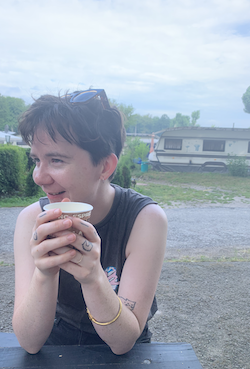
Mikaella Clements
Mikaella Clements is an Australian writer who lives in Berlin. Her first novel, The View Was Exhausting, was co-written with her wife, Onjuli Datta,...
More from this edition

Before I forget again
Poetry I am a ceramic horse in kintsugi fields. Shards shred my tongue to gold rivers. Cracked and crazed – from fire gallops beast. Memory slips lapis lazuli. I break curses, gather spells. Nudge fresh letters in water troughs – watch words bob – shiny new apples to crunch.
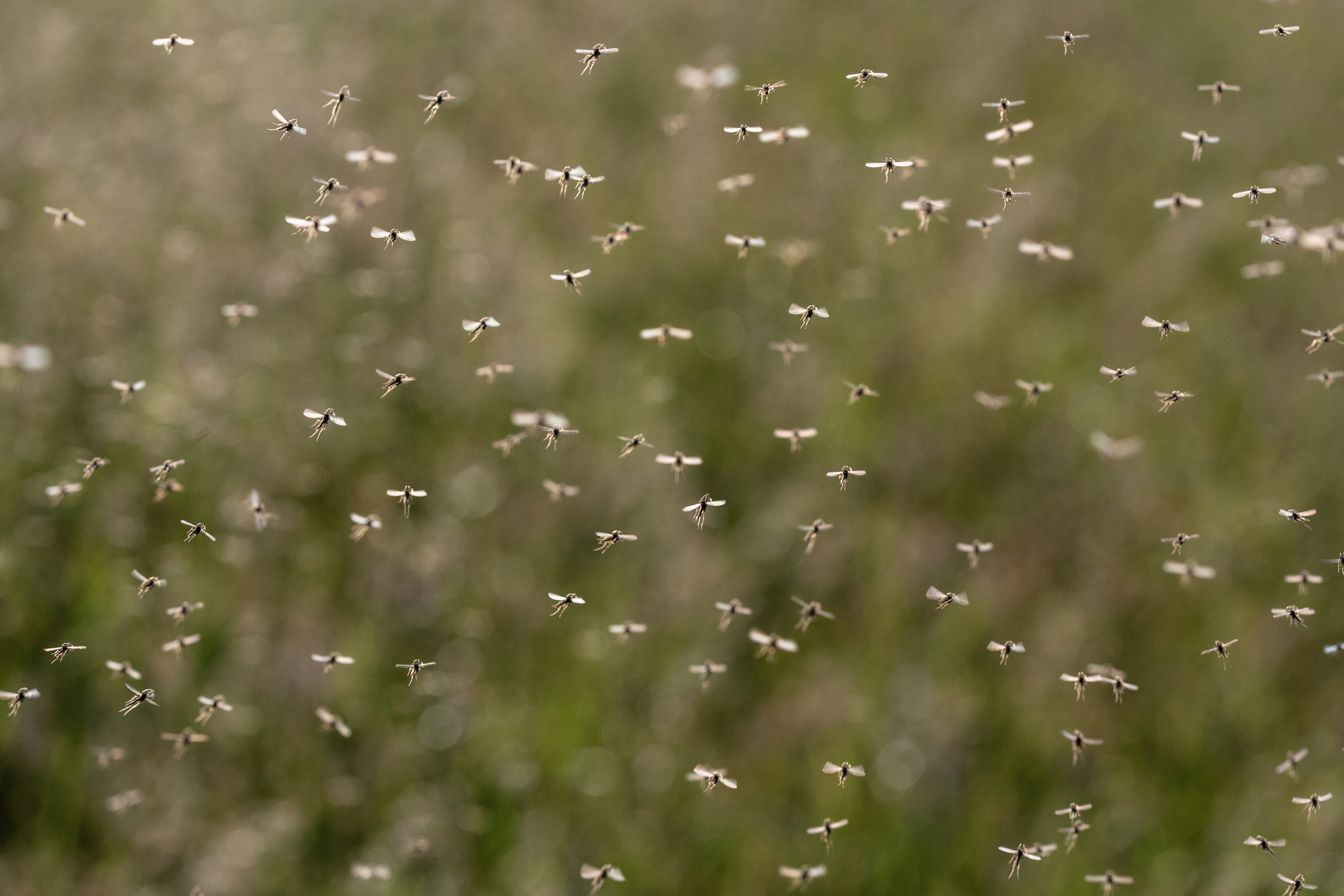
Fly on the wall
In ConversationAnimals are extremely important and extremely neglected in our public discourse. We’re not even paying enough attention to human rights and human justice issues, and we’re paying next to no attention to non-human rights and non-human justice issues. That doesn’t mean that we don’t care – people do care about animals, and they want animals to have good lives – but we’re either unaware of or unwilling to acknowledge all the pain and suffering that animals experience as a result of human activity.
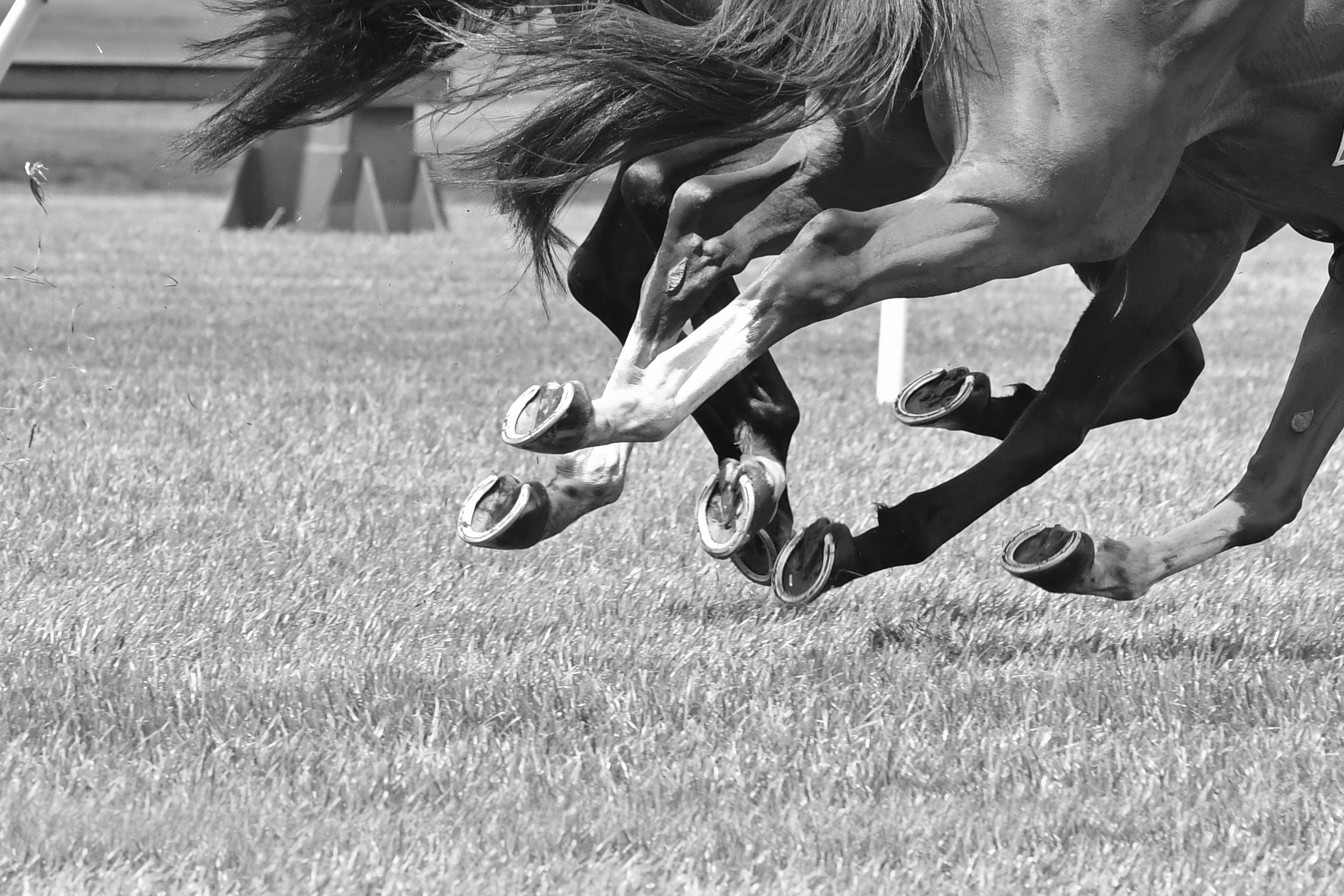
A life with horses
In ConversationIn 2011, I was invited to a writers’ retreat in Santa Fe. It was held on a lovely old ranch with beautiful horses – Western Paints, Appaloosas – and one of the wranglers noticed me admiring them and invited me on a trail ride. It was an ecstatic experience.